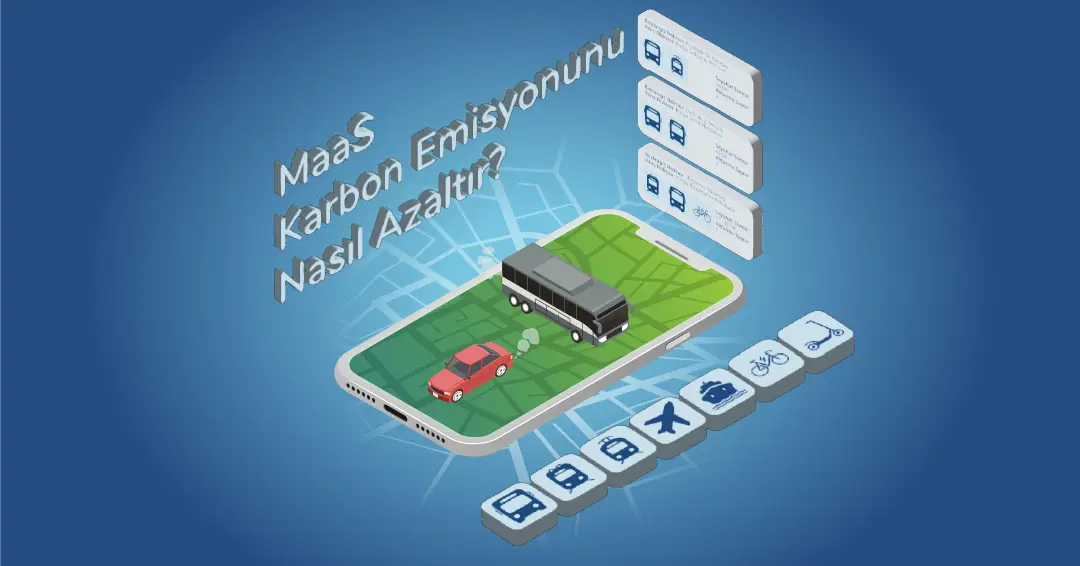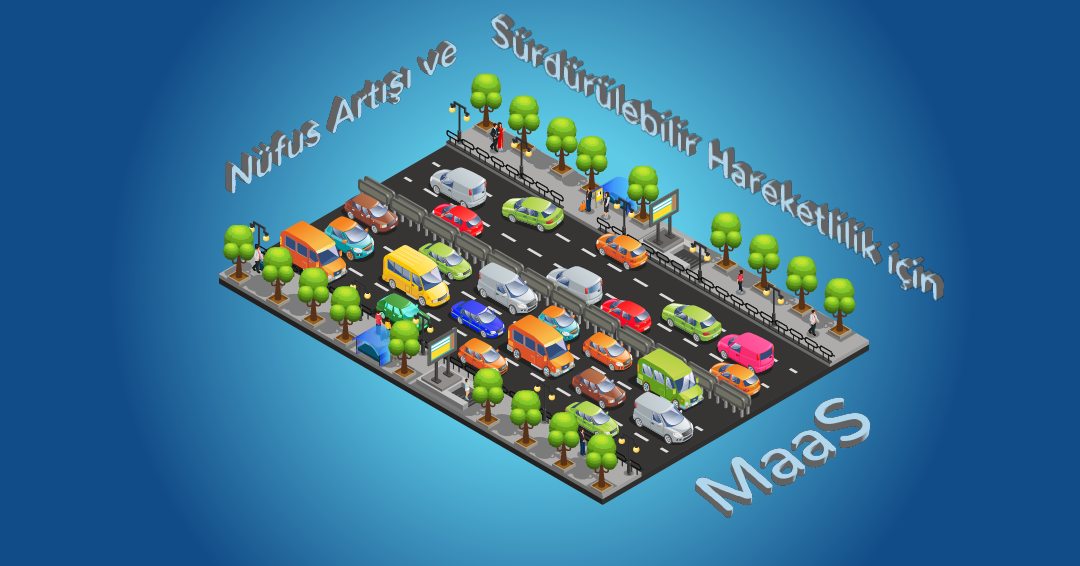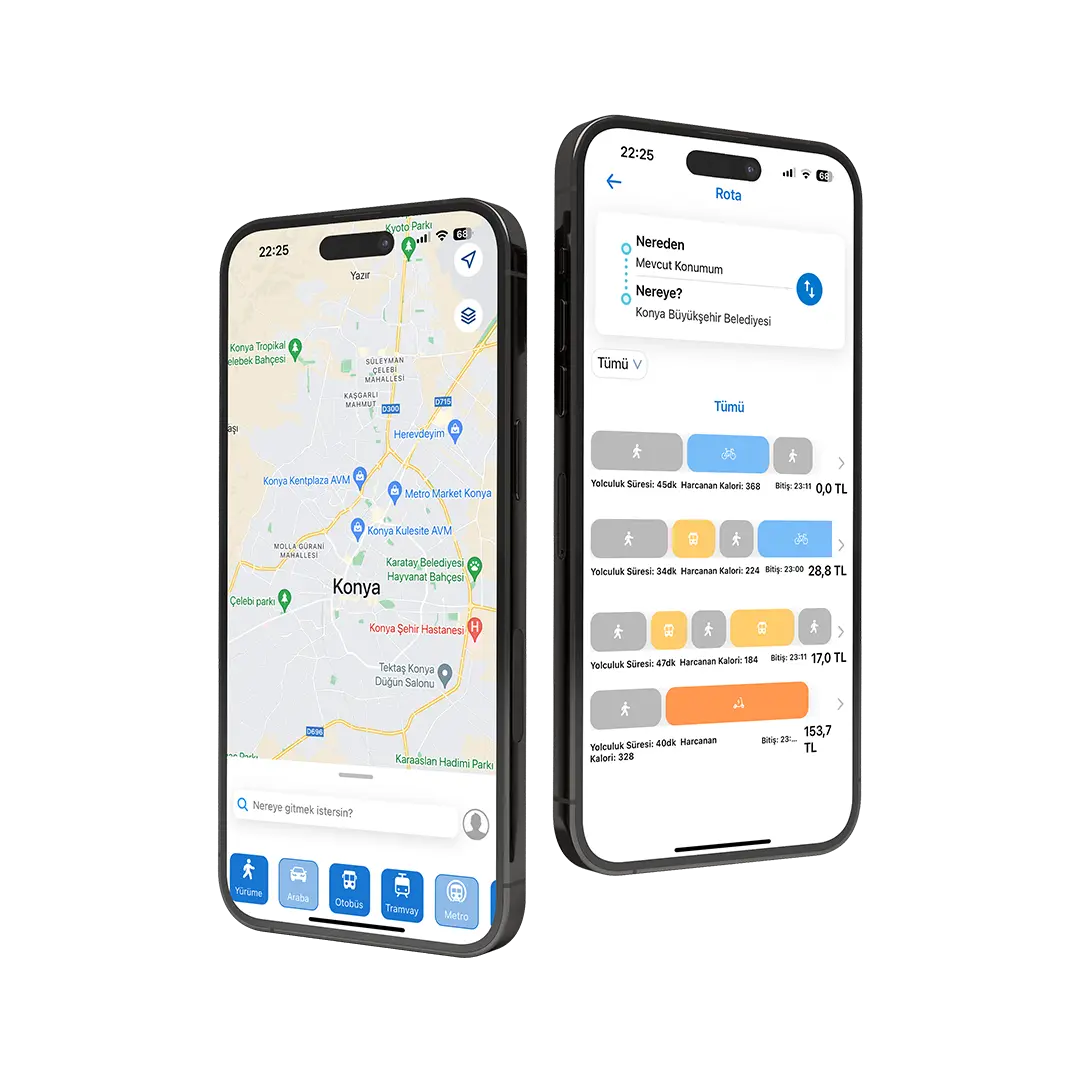Global warming and climate change are among the most pressing issues of our time, and the transportation sector, with its carbon emissions, is one of the major accelerators of global warming. Traditional transportation methods, especially personal vehicle use, increase carbon emissions and have negative environmental impacts. Approximately 25% of global carbon dioxide emissions come from transportation, with around 20% of that originating from vehicles with internal combustion engines. However, Mobility as a Service (MaaS) solutions offer an effective way to reduce CO2 emissions in the transportation sector. So, how does MaaS reduce CO2 emissions?
- Promotion of Sustainable Transportation Options: MaaS promotes sustainable transportation options. It encourages the use of eco-friendly transportation modes such as public transit, bike sharing, car sharing, and electric vehicle usage. The MaaS platform provides users with access to these options and directs them towards choices that have a lower environmental impact. As the use of personal vehicles decreases, CO2 emissions are significantly reduced.
- Smart Routing and Traffic Optimization: MaaS provides smart routing and traffic optimization. By using data analytics and intelligent algorithms, it monitors traffic flow and suggests alternative routes or transportation modes to minimize congestion. This helps reduce traffic jams and makes vehicle use more efficient. Shorter and more effective routes lead to decreased fuel consumption, which in turn lowers CO2 emissions.
- Car Sharing and Mode Sharing: MaaS encourages car sharing and mode sharing. When each individual uses their own vehicle, it increases traffic congestion and CO2 emissions. However, with MaaS, it becomes possible to share vehicles or combine different transportation modes such as public transit. This enables more efficient use of transportation and reduces CO2 emissions.
- Electric Vehicles and Sustainable Energy Usage: MaaS platforms encourage the use of electric vehicles. Electric vehicles are an eco-friendly alternative that significantly reduces carbon emissions. By promoting the use of electric vehicles, MaaS plays an effective role in reducing CO2 emissions. Additionally, promoting charging stations based on sustainable energy sources and the use of renewable energy can further reduce CO2 emissions.
- Better Management of Transportation Demand: MaaS helps in better management of transportation demand. By using data analytics and forecasting techniques, it provides more transportation options in areas and times of high demand. This allows for better planning of trips and optimization of transportation capacity. Improved management of transportation demand reduces traffic congestion and unnecessary vehicle use, which in turn lowers CO2 emissions.
In conclusion, MaaS solutions have significant potential to reduce CO2 emissions in the transportation sector. By promoting sustainable transportation options, smart routing and traffic optimization, car and mode sharing, electric vehicles, and sustainable energy use, MaaS minimizes the negative environmental impacts. With the adoption of more comprehensive MaaS applications in the future, CO2 emissions will further decrease, leading to a more sustainable transportation system.













